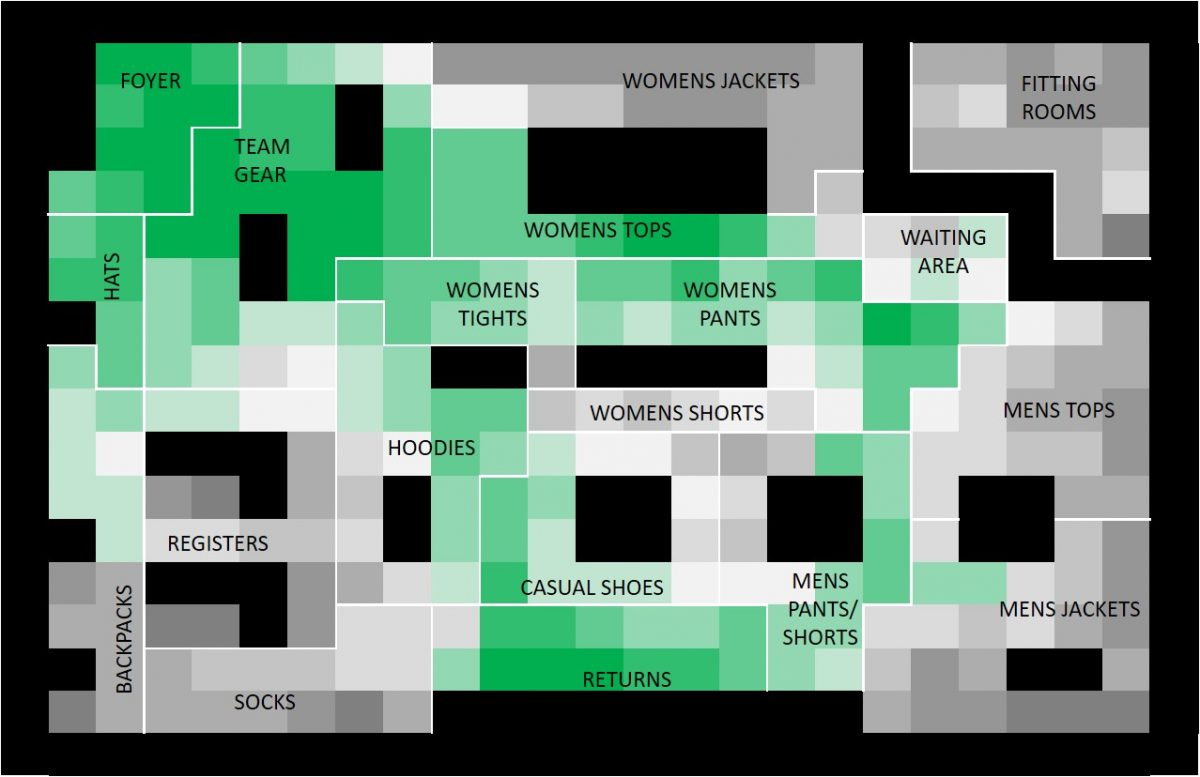Optimizing Retail: Competitive Advantage and In-Store Customer Analytics
Optimizing Retail: Competitive Advantage and In-Store Customer Analytics
By Gary Angel
|February 25, 2017

Five years ago, there was a battle being waged in the sporting world between analytics and “traditional” forms of expertise. That battle is pretty much over. Both sides won. Each is essential and often, these days, they are blended in the same person. There’s no reason to repeat this silliness in other domains. Having a comprehensive, behavioral view into what’s happening in your stores won’t suddenly make it possible for a desk jockey in the Punjab to drive merchandising success. But it can make it easier for a Store Manager or a CMO to pull levers that actually matter. Levers around store layout and marketing that have been around forever but can still be tuned. Levers around staff allocation, distribution, training and even hiring that everyone knows exist but no one has the time or evidence to manage. Levers around digital experiences and digital signage that have been studiously ignored in most stores. And strategic levers around experience design, branding and strategy that get lots of attention but have had to struggle with little hard data to determine success or drive improvement.
Here’s a quick summary of six ways – each of which I’ve covered – that in-store customer journey tracking drives continuous improvement and store transformation:
Store Layout: Knowing what customers bought is only half the story when it comes to the store. Every store has dead-zones, corridors, and patterns that vary by customer type. Without in-store customer journey tracking, those patterns get submerged in the general average. When you can track how specific segments of customers move to their primary destination, where they linger along the way, and what they never see, you have the opportunity to optimize segment specific store journeys by adjusting the store.
Store Promotion and Merchandising: Every store has its own philosophy. Blending art and science, brand and merchandising. Density, color, display, greeters and signage combine to create a powerful message that not only drives customer shopping but sends strong brand messages. Tuning that mix is NOT child’s play. Aggressive and detailed measurement can help get the details consistently right, and then optimize those details locally. Eal
Staffing: How important are your associates? Pretty darn important. Staff is a huge lever for performance. But how much thought really goes into it. If you’re just allocating hours and letting it go, you’re not doing it right. Analytics provides a way to optimize the allocation, distribution, training and even hiring of Associates. It gives you a view into employee performance that is both deeper and more balanced than traditional measures.
Digital Experiences and Signage: Stores have become a dusty graveyard of digital experiences that didn’t really work. And digital signage is often as static as the printed boards it’s supposed to improve on. If you gave digital experience a try and decided it didn’t work, it’s probably because you did it wrong. No experience works perfectly out-of-the-box. And the only real fault in the firm that sold you that experience was in selling you that myth. You want digital experiences in-store to work? Start measuring and tuning them. Understand that the day they go into the store is the day your work really begins.
Omni-Channel Experience: Life in the omni-channel world is a lot more complicated. Reverse supply chain is about as much fun for those involved as giving birth. But it’s just about as essential for continuing the life of the store. From returns to in-store-pickup to optimizing showrooming for online sales, omni-channel is the key to competitive advantage versus he-who-cannot-be-named. And in-store customer journey tracking is the key to getting this stuff right. For you. And for the consumer.
Customer Journey and Digital Transformation: At the strategic level, the hardest journey an enterprise can make is switching the gestalt to true customer focus. No matter where you are on that journey – and even if you don’t desire or seek ultimate enlightenment, understanding the customer journey is the key prerequisite to translating a bunch of fancy language into an actual concrete understanding of who your customers are, how they actually experience the store, and what changes might make that experience better.
When you invest in a measurement technology, you darn well better understand what it’s for. When you build a measurement technology, that’s even more true. The ability to measure the in-store customer journey is cool. The technology is cool. The reporting (at least as we’re doing it) is very cool. But the really essential point isn’t all that coolness. It’s that this type of measurement can change the way you do business. Good in-store customer journey measurement provides a look into customer experience and store operations that no one has ever had before – certainly not at any scale. The questions you can answer with this technology range across store layout, staffing optimization and a host of customer experience opportunities essential to omni-channel success. This technology, used well, can help you move toward the brave new world of experience-based retail. Better still, it can drive true competitive advantage along the way.
To talk with us about optimizing your in-store customer experience, drop us a line at info@digitalmortar.com